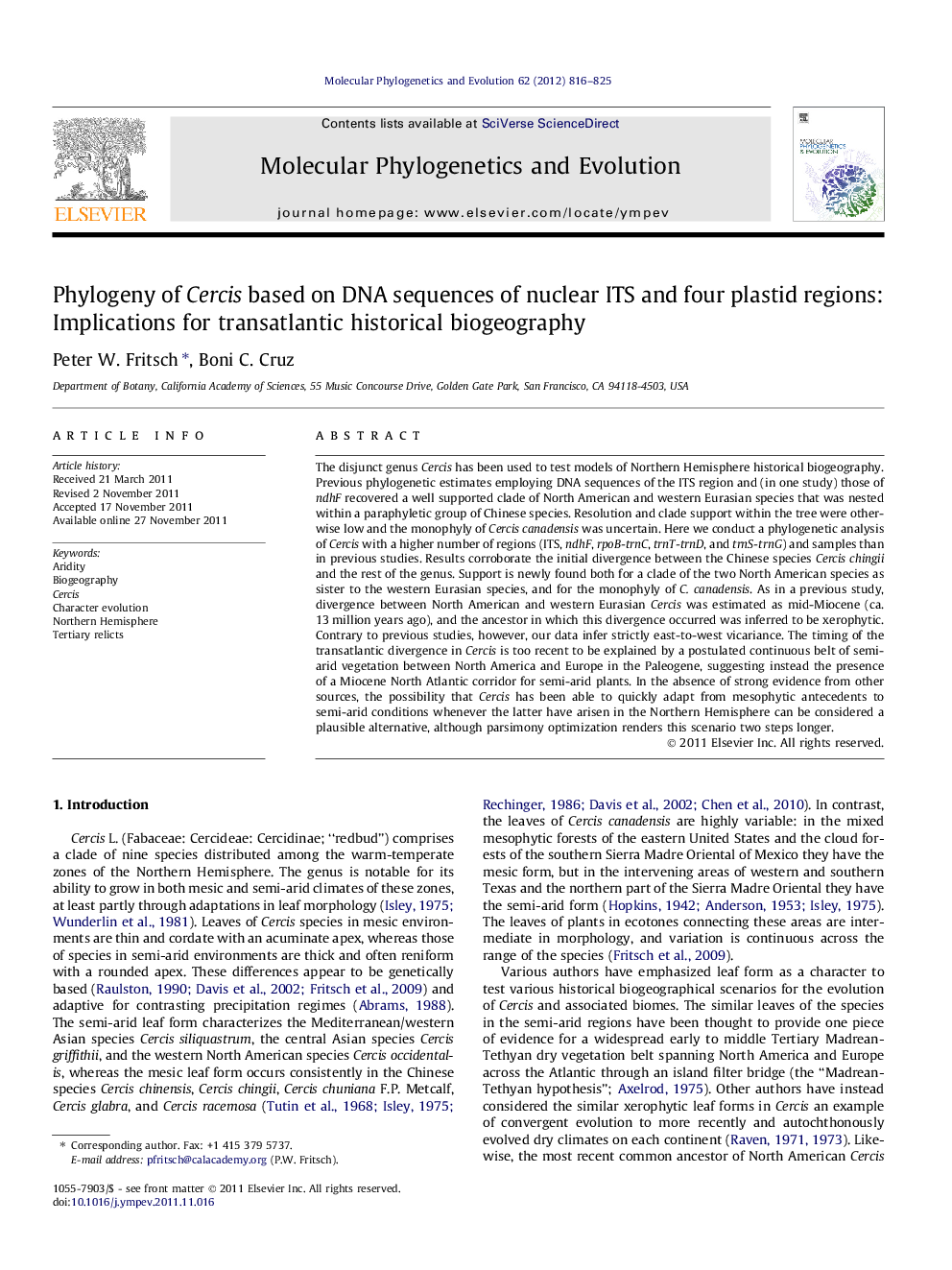| Article ID | Journal | Published Year | Pages | File Type |
|---|---|---|---|---|
| 5920291 | Molecular Phylogenetics and Evolution | 2012 | 10 Pages |
The disjunct genus Cercis has been used to test models of Northern Hemisphere historical biogeography. Previous phylogenetic estimates employing DNA sequences of the ITS region and (in one study) those of ndhF recovered a well supported clade of North American and western Eurasian species that was nested within a paraphyletic group of Chinese species. Resolution and clade support within the tree were otherwise low and the monophyly of Cercis canadensis was uncertain. Here we conduct a phylogenetic analysis of Cercis with a higher number of regions (ITS, ndhF, rpoB-trnC, trnT-trnD, and trnS-trnG) and samples than in previous studies. Results corroborate the initial divergence between the Chinese species Cercis chingii and the rest of the genus. Support is newly found both for a clade of the two North American species as sister to the western Eurasian species, and for the monophyly of C. canadensis. As in a previous study, divergence between North American and western Eurasian Cercis was estimated as mid-Miocene (ca. 13Â million years ago), and the ancestor in which this divergence occurred was inferred to be xerophytic. Contrary to previous studies, however, our data infer strictly east-to-west vicariance. The timing of the transatlantic divergence in Cercis is too recent to be explained by a postulated continuous belt of semi-arid vegetation between North America and Europe in the Paleogene, suggesting instead the presence of a Miocene North Atlantic corridor for semi-arid plants. In the absence of strong evidence from other sources, the possibility that Cercis has been able to quickly adapt from mesophytic antecedents to semi-arid conditions whenever the latter have arisen in the Northern Hemisphere can be considered a plausible alternative, although parsimony optimization renders this scenario two steps longer.
Graphical abstractDownload full-size imageHighlights⺠We estimate Cercis phylogeny with four plastid regions and one nuclear region. ⺠Phylogenetic analyses support a clade of North American Cercis. ⺠Phylogenetic analyses support the monophyly of Cercis canadensis. ⺠We estimate a Miocene divergence between western Eurasian and North American Cercis. ⺠Intercontinental divergence is inferred to have involved a xerophytic ancestor.
